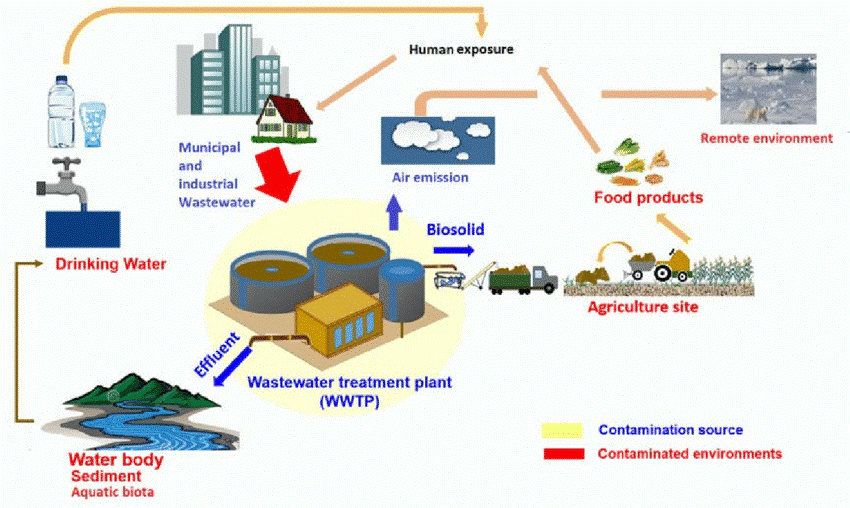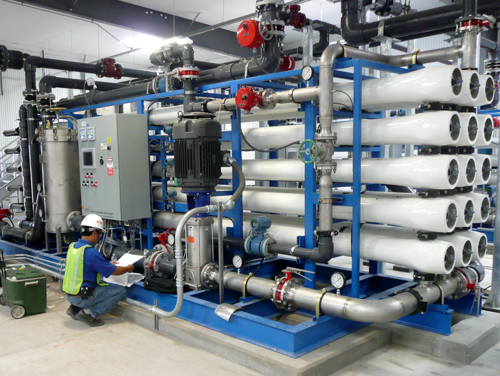Advanced Methods for Reliable PFAS Contamination Elimination
The relentless obstacle of PFAS contamination necessitates the expedition of sophisticated elimination techniques that can properly deal with these hazardous substances. Cutting-edge innovations, such as sophisticated oxidation procedures and different adsorption techniques, have actually become encouraging services in mitigating PFAS from impacted environments. In addition, the function of regulative structures in shaping these modern technologies can not be neglected, as they determine the rate and instructions of removal initiatives. As we assess these advanced methods, it becomes vital to evaluate their practical applications and the broader implications for environmental health and policy.
Understanding PFAS Properties
Although per- and polyfluoroalkyl substances (PFAS) have actually been widely utilized in different commercial and customer items as a result of their special residential properties, their determination in the environment poses substantial obstacles to public health and wellness and safety. PFAS are a group of artificial chemicals defined by a carbon-fluorine bond, one of the toughest chemical bonds recognized, which adds to their outstanding security and resistance to deterioration. This stability enables PFAS to accumulate in the environment and living microorganisms, causing possible negative health and wellness impacts.
The hydrophobic and oleophobic nature of PFAS makes them specifically efficient in applications such as non-stick finishes, stain-resistant textiles, and firefighting foams. These exact same properties add to their environmental perseverance, as PFAS do not quickly damage down with all-natural procedures. Their extensive use has actually led to ubiquitous contamination of water resources and soils, making complex remediation efforts. Understanding the chemical properties of PFAS is crucial for establishing effective methods to take care of and reduce their environmental effect. The distinct attributes of these compounds demand a nuanced method to attend to the difficulties posed by their presence in communities and potential human exposure.
Ingenious Remediation Technologies
The determination of PFAS in the atmosphere has spurred the advancement of ingenious remediation technologies targeted at successfully eliminating these pollutants from impacted environments. Among the most promising approaches are innovative oxidation procedures (AOPs), which use powerful oxidants to break down PFAS compounds right into much less unsafe materials. AOPs can be customized to target specific PFAS frameworks, improving their efficacy.
Another emerging technology is using adsorption media, such as activated carbon and ion exchange materials, which can selectively capture PFAS from contaminated water. These materials have revealed considerable removal effectiveness, although periodic replacement and regrowth are necessary to keep efficiency.
Membrane layer purification strategies, consisting of reverse osmosis and nanofiltration, are also getting grip in PFAS remediation. These approaches can successfully separate PFAS from water, providing a practical solution for dealing with contaminated sources. Additionally, thermal treatment approaches, such as incineration, can break down PFAS into non-toxic by-products, though they call for careful administration to manage discharges.
Collectively, these cutting-edge removal innovations stand for significant developments in the ongoing battle against PFAS contamination, using different strategies to recover afflicted environments and safeguard public wellness.

Bioremediation Strategies
Bioremediation methods offer a promising strategy to attending to PFAS contamination by using the all-natural abilities of microorganisms to deteriorate these relentless substances (m270 waste management). This approach entails the usage of germs, fungi, and other microbes that Source can metabolize or transform PFAS compounds into less dangerous by-products
Recent innovations in molecular biology and environmental microbiology have actually enhanced our understanding of microbial neighborhoods and their possible functions in PFAS destruction. Researchers are actively discovering particular pressures of bacteria, such as Pseudomonas and Bacillus, see this page which have actually demonstrated the capability to damage down certain PFAS compounds.
Sitting bioremediation techniques, where bacteria are boosted directly in polluted environments, can be specifically effective. This strategy typically involves the application of nutrients or electron benefactors to promote microbial development and activity. In addition, ex situ techniques, such as bioreactors, allow for regulated conditions that can maximize degradation prices.
In spite of the promise of bioremediation, obstacles continue to be, consisting of the intricate nature of PFAS compounds and the need for substantial field testing - m270 waste management. Proceeded study and development will be critical to refine these techniques and evaluate their performance in varied ecological contexts
Adsorption and Filtration Methods
Dealing with PFAS contamination typically entails using adsorption and filtration methods, which are designed to remove these persistent chemicals from water and soil. Among the various techniques, activated carbon adsorption is commonly used due to its high area and porosity, allowing efficient trapping of PFAS molecules. Granular triggered carbon (GAC) systems are particularly favored for dealing with big volumes of contaminated water, while powdered triggered carbon (SPECIAL-INTEREST GROUP) can be made use of for smaller-scale applications.
Ion exchange materials also show guarantee in PFAS removal, working by exchanging PFAS ions with less damaging ions in the water. This technique has actually shown effectiveness in concentrating PFAS substances, promoting their succeeding elimination. In addition, membrane layer purification methods, such as reverse osmosis and nanofiltration, operate by utilizing semi-permeable membranes to separate PFAS from water, successfully minimizing their concentrations.
While these techniques are efficient, they should be very carefully picked based upon the details PFAS substances present and the environmental context. Continuous advancements in products science and engineering are leading to the advancement of unique adsorbents and purification systems that improve removal efficiencies and lower functional expenses, thus enhancing total remediation efforts.
Regulatory and Policy Considerations
Exactly how can efficient regulatory structures boost the monitoring of PFAS contamination? Thorough plans are necessary to make sure a coordinated and robust feedback to the challenges presented by per- and polyfluoroalkyl substances (PFAS) Laws can develop clear guidelines for tracking, reporting, and remediating PFAS-contaminated websites, cultivating responsibility amongst sectors and public entities. (m270 waste management)

On top of that, monetary incentives and grants can be incorporated into plans to urge the adoption of advanced removal innovations. Policymakers should additionally prioritize r & d, making certain that arising techniques for PFAS elimination are verified and executed effectively.
In addition, public understanding and involvement are vital components of any type of governing method, encouraging neighborhoods to advocate for their health and wellness. Ultimately, a well-structured governing environment will certainly not only improve the management of PFAS contamination yet additionally promote sustainable techniques that shield future generations.
Conclusion
In recap, the complexity of PFAS contamination necessitates the adoption of innovative removal approaches. Cutting-edge innovations such as innovative oxidation procedures, adsorption techniques, and membrane filtering have actually demonstrated substantial effectiveness in removing these relentless compounds from contaminated water resources. In addition, regulatory frameworks m270 pfas treatment need to progress to support the implementation of these modern technologies, guaranteeing secure and effective administration of PFAS pollutants. Continued r & d in this field continue to be critical to resolving the difficulties posed by PFAS contamination.